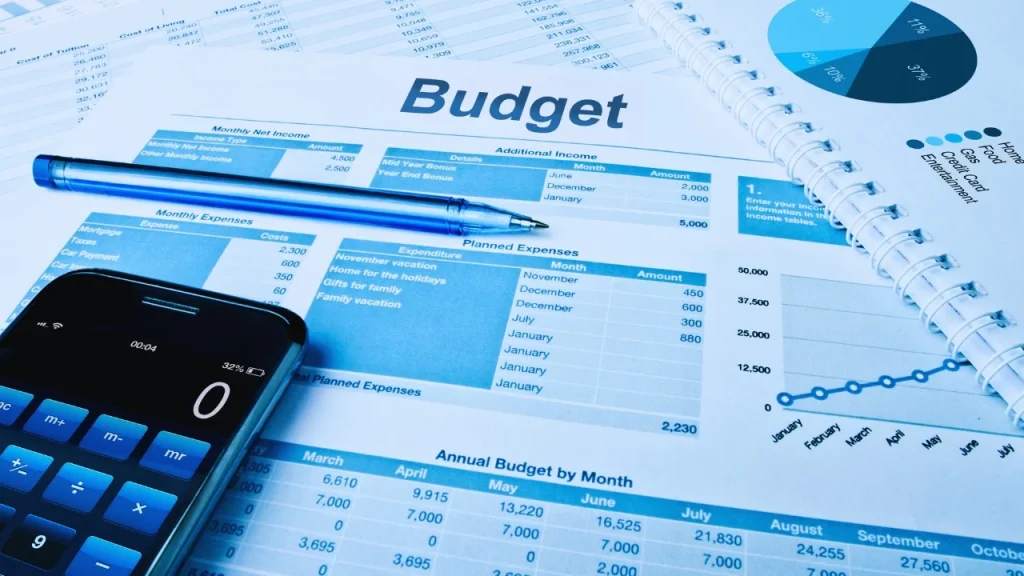Learning how to make a budget is a fundamental skill for financial stability and achieving your financial goals.
Creating a budget is a fundamental step toward achieving financial stability and success. A well-structured budget helps you manage your income and expenses, save for the future, and avoid debt. Here’s a detailed guide on how to make a budget effectively. It’s like a plan for your money, so you can see where it’s going and make sure you have enough for the things that matter most.
Table of Contents
A Step-by-Step Guide to How to Make a Budget
Money comes in, money goes out. This guide helps you how to manage money! Here is a step-by-step guide to show you how to make a budget, like a simple plan for your money.
Step 1: Determine Your Income
Begin by calculating your total monthly income. This includes your salary, bonuses, freelance work, rental income, and any other sources of income. Make sure to consider your net income (after taxes) rather than your gross income.
Step 2: Track Your Expenses
Identify and list all your expenses. Categorize them into fixed expenses (rent, mortgage, utilities) and variable expenses (groceries, entertainment, transportation).
Step 3: Set Financial Goals
Identify your short-term and long-term financial goals. Short-term goals might include saving for a vacation or paying off credit card debt, while long-term goals could involve buying a home or saving for retirement.
Step 4: Categorize Your Spending
Organize your expenses into categories such as housing, transportation, groceries, entertainment, insurance, savings, and debt repayment. This will help you see where you might need to adjust your spending.
Step 5: Create a Plan
Based on your income and tracked expenses, create a spending plan. Allocate a specific amount of money to each expense category, ensuring that your total expenses do not exceed your income. Prioritize essential expenses and your financial goals.
Step 6: Adjust and Allocate Funds
If your expenses exceed your income, look for areas where you can cut back. This might mean reducing discretionary spending or finding ways to save on fixed expenses. Allocate any remaining funds to your savings and debt repayment goals.
Step 7: Use Budgeting Tools
Consider using budgeting tools or apps to help you manage your budget. Tools like Mint, YNAB (You Need A Budget), and PocketGuard can simplify the process by tracking your spending and providing insights.
Step 8: Monitor Your Progress
Regularly review your budget to ensure you’re staying on track. Monitor your spending, adjust categories as needed, and celebrate your progress toward your financial goals.
Step 9: Make Adjustments
Life circumstances and financial priorities can change, so be flexible with your budget. If you receive a raise or your expenses increase, adjust your budget accordingly to stay aligned with your financial goals.
Step 10: Save for Emergencies
Ensure you allocate a portion of your budget to an emergency fund. This fund should cover 3-6 months of living expenses to protect you in case of unexpected financial setbacks.
Step 11: Stay Disciplined
Stick to your budget by practicing discipline and making mindful spending decisions. Remember, a budget is a tool to help you achieve financial stability and reach your goals.
Step 12: Review and Revise Regularly
Revisit your budget monthly or quarterly to review your financial progress and make any necessary adjustments. This will help you stay on track and make informed decisions about your finances.
Concluding Words
This is the complete guideline for making a budget. However remember that a budget is a living document, so revisit and adjust it regularly to reflect your changing needs and market conditions. As your business grows, so too will your financial complexity. However, the core principles you learned here – tracking income, categorizing expenses, and setting realistic goals – will remain your guiding light.

